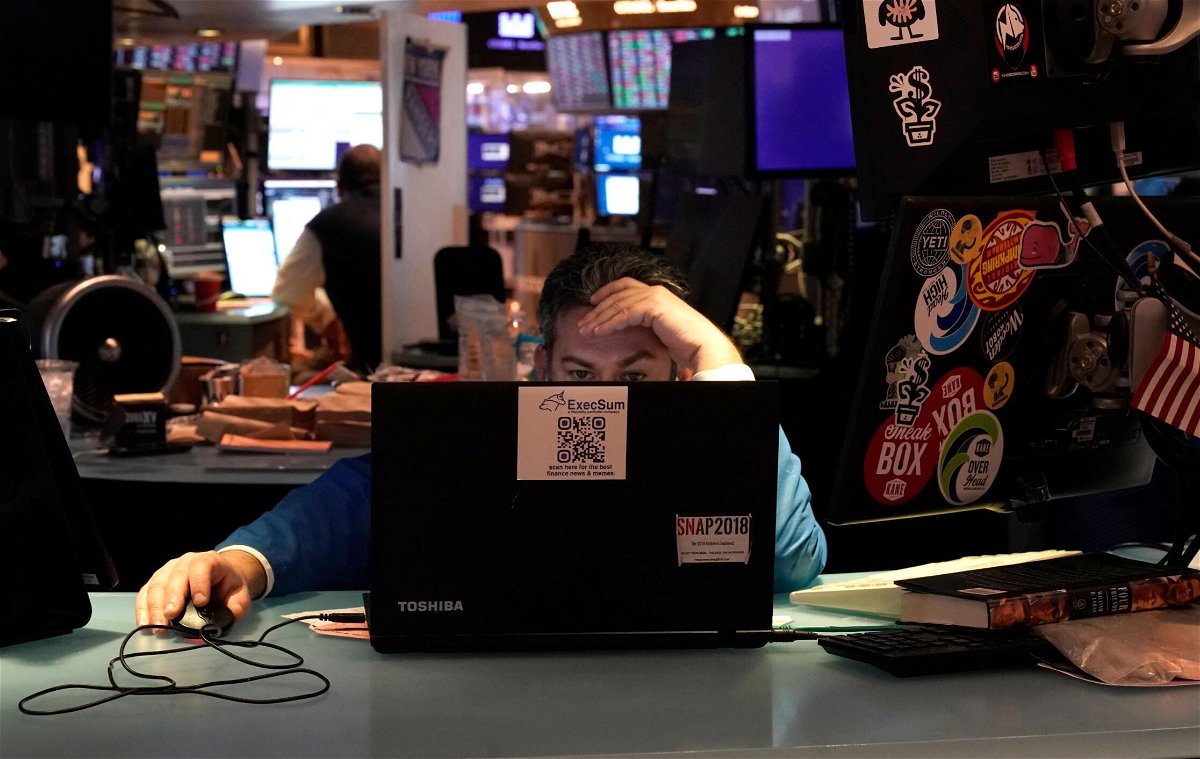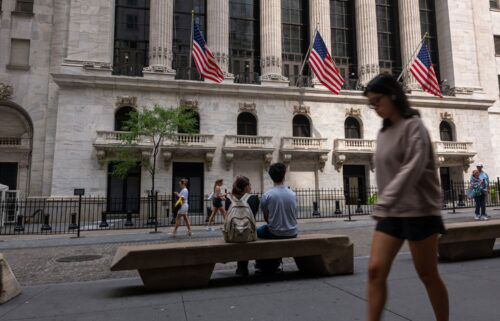Rate hikes have been good for stocks. This time might be different

Traders work on the floor of the New York Stock Exchange at the opening bell on January 25.
By Julia Horowitz, CNN Business
The market has churned intensely this week as investors get to grips with expectations that the Federal Reserve will soon begin aggressively hiking interest rates in an effort to cap surging inflation.
What’s happening: Trading on Tuesday was another rollercoaster ride, with the S&P 500, Dow and Nasdaq Composite all finishing in the red.
Recent turbulence has sparked fears that the party on Wall Street could be ending as central banks, which have pumped unprecedented amounts of money into the economy during the pandemic, withdraw their support.
Investors now expect the Fed to hike interest rates four times this year (or more) if inflation continues apace. That’s encouraging them to dump stocks in companies that rely on borrowed cash, as well as the technology firms that have powered the recent bull market.
Still, many analysts think the sell-off has been too hasty. And historical data shows that while a shift in Fed policy often generates volatility, rate hike cycles are often good for stocks, not bad.
“Stocks have generally had positive performance during periods where the Fed is raising short-term rates because this is normally paired with a healthy economy,” Keith Lerner, Truist’s chief market strategist, wrote in a research note earlier this month. “A growing economy supports corporate profit growth, which supports the stock market,” he explained.
Lerner’s team estimates that stocks have climbed at an average annualized rate of 9% during the 12 Fed rate hike cycles since the 1950s and generated positive returns in 11 of those instances.
Other banks have drawn similar conclusions.
“Historically, the S&P 500 index has been resilient around the start of Fed hiking cycles,” Goldman Sachs recently told clients.
Its strategists noted that while the S&P 500 produced average losses of 6% during the three months following the first hike of recent cycles, the weakness was “short-lived.” Six months after the first hike, the index had returned 5% on average.
Does that mean the latest pullback is overdone? Some investors think so — though there are also reasons to set this Fed hiking cycle apart from those before it.
Difference 1: Goldman Sachs emphasized that certain stocks tend to benefit more from rising interest rates, like banks, industrial companies and energy firms, which perform well when the economy is expanding.
But the US stock market is now way more exposed to big tech companies, which have been vulnerable recently. In December, Goldman found that 51% of S&P 500 returns since April came from just five companies — Microsoft, Apple, Nvidia, Tesla and Google parent Alphabet. All are down sharply this year.
Difference 2: This hiking cycle has a unique starting point. In March 2020, the Fed pushed rates to rock-bottom to combat the economic deep freeze caused by the pandemic and started buying hundreds of billions of dollars worth of bonds.
That squeezed returns on the bond market, encouraging investors to park more of their clients’ cash in stocks. In the feeding frenzy that ensued, they considered newer and riskier names, many of which are now getting hammered.
If the investing mania of the past two years starts to meaningfully unwind, historical comparisons may fall short.
Coming up: Attention now turns to the latest Fed meeting, which wraps up Wednesday. Investors are looking for clarity on what the central bank will do at its meeting in March, when rate hikes are expected to kick off.
Microsoft earnings boost hopes for tech turnaround
Microsoft’s stock is getting a boost after America’s second largest company said it expects healthy profits at the start of 2022.
The latest: Microsoft shared results from the last three months of 2021 after US markets closed on Tuesday. The company reported revenue of $51.7 billion and profit of $18.8 billion. That’s a 21% jump from one year earlier and better than Wall Street’s forecasts.
The tech giant was lifted by healthy demand for its cloud services business, which saw revenue climb 32% year-over-year.
“As every company becomes a digital company, they will need a distributed computing fabric to build, manage, secure and deploy applications anywhere,” CEO Satya Nadella said on a call with analysts, noting that major firms like CVS and Wells Fargo chose Microsoft’s cloud services as their preferred provider last quarter.
Microsoft’s stock initially dropped in premarket trading, underscoring the very high expectations of investors in a rocky market environment. Attention on the company is heightened after it announced it would buy video game maker Activision Blizzard for almost $69 billion in one of the biggest tech industry deals ever.
But shares later rallied after Microsoft shared a strong outlook for its current quarter. They’re up 4% in premarket trading on Wednesday.
The takeaway: Microsoft has suffered alongside other tech stocks as investors brace for action from the Federal Reserve. Its stock is down 14% so far this year.
There’s been hope that tech earnings could serve as a circuit breaker. Microsoft shows that’s possible — so long as guidance for future quarters holds up.
When there’s 5 days left of computer chips
For much of the past year, manufacturers have been scrambling to secure enough computer chips to maintain production. The effects of the shortages have been significant, forcing carmakers to shutter their plants and hurting companies’ ability to meet a surge in consumer demand for their products.
But the extent of the problem is laid bare in a new report from the US Commerce Department.
A survey of more than 150 companies that produce and use semiconductors found that the median supply of chips held by manufacturers dropped from 40 days’ worth in 2019 to less than five days’ worth last year.
“The semiconductor supply chain remains fragile,” the report said. “Demand continues to far outstrip supply.”
Respondents don’t see constraints going away within the next six months, and the US government warned that if production is disrupted overseas, it could force factory shutdowns in the United States.
On the radar: The report is likely to bolster those calling on lawmakers to direct resources to domestic production, a priority of the Biden administration. Last week, President Joe Biden hailed Intel’s announcement that it would build a new $20 billion chip manufacturing complex outside of Columbus, Ohio, while stressing more investment is needed.
Up next
AT&T, Boeing and Kimberly-Clark report earnings before US markets open. Intel, Levi Strauss, Tesla and Whirlpool follow after the close.
Also today:
- New US home sales for December post at 10 a.m. ET.
- The Fed announces its latest policy decision at 2 p.m. ET.
Coming tomorrow: Earnings from Apple, Mastercard, McDonald’s and Robinhood.
The-CNN-Wire
™ & © 2022 Cable News Network, Inc., a WarnerMedia Company. All rights reserved.



